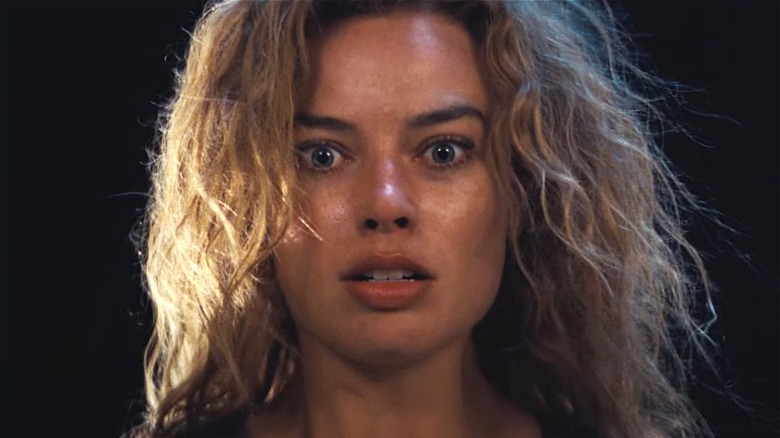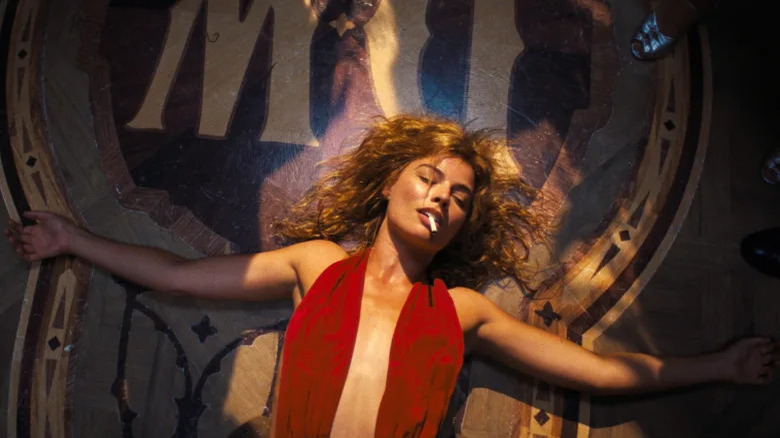Experts Say Babylon Accurately Reflects The 1920s Hollywood Scene (& Why That's So Distressing)
"Babylon" hit theaters with a resounding thud over Christmas weekend. In its opening bow, the epic drama grossed just under $5 million at the domestic box office against a budget of roughly $80 million (via Deadline). That's not good news by any metric, and there are any number of factors that could have contributed to the poor showing. From once-in-a-lifetime snow storms to mixed reviews, the flick didn't hold up to expectations, which is a shame seeing how it's a high-budget original film from an auteur, Oscar-winning director.
Still, it'll be in theaters for a little while longer in case you want to watch another three-hour drama once you've finished "Avatar: The Way of Water." And after checking it out, you may wonder how much of it is based on reality and how much is pure entertainment. The characters, while fictional, are based on real people, and it takes place in 1920s Hollywood. At certain points in the movie, it might seem like the creatives took a great deal of liberties with the reporting, but according to experts, things really were that depraved in Hollywood a century ago.
Drugs flowed freely in 1920s Hollywood
Variety caught up with "Tinseltown" author William J. Mann, who corroborated the idea that Hollywood in the 1920s was, indeed, one massive party all of the time. He stated, "There was an incredible freedom before the production code was established, and so people had a much freer sense of how they could live their lives. Hollywood before the code was a haven for free thinkers and free lovers." The code he's referring to is the Hays Code, which was in effect from 1934 to 1968 and dictated how motion pictures, as well as their stars, were to behave. It prohibited things such as profanity and sexual persuasions, and needless to say, it really tamed stars who were on the loose. At the very least, it forced them to be more private concerning any problematic areas of their personal lives.
Variety goes on to report how there were various drug scandals throughout the 1920s, resulting in several deaths. Mann's "Tinseltown" even reports how Adela Rogers St. Johns, a reporter, recalled, "Cecil B. DeMille handing out a psychedelic combination of hyoscine and morphine at parties." The article concludes by saying how "Babylon" may take an exaggerated point of view with the debauchery, but ultimately, it's grounded in reality. The ways of the 1920s impacted how Hollywood conducted itself into the Hays Code throughout the 1930s and '40s.
Not much has changed
Seeing how "Babylon" takes place nearly 100 years ago, it would be easy to assume that things have changed a great deal in Hollywood. After all, the film itself is about change, specifically how movies went from silent pictures to talkies. But the more things change, the more they tend to stay the same, as several outlets have reported in the aftermath of the film's release.
Director Damien Chazelle spoke with Entertainment Weekly about the picture and how Hollywood is perpetually in an area where everyone thinks it's dying. Sound familiar? Chazelle goes on to say, "These kind of paradigm shifts come and go, the same way that careers come and go, and movie stars come and go. That, on some level, is very scary, and it can even be depressing." It goes without saying that drugs never left Hollywood; they just became more well-hidden. Parties still happen, and movie stars still die prematurely. "Babylon" isn't merely commenting on Hollywood a century ago. It shines a light on how things likely occur today, even if they're more behind the scenes.


